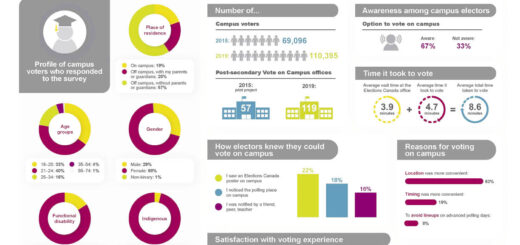Who Should I Vote For?
An overview of federal party platforms
Sam Ridgeway, Staff Writer
The Conservative Party of Canada (CPC), the Liberal Party, and the New Democratic Party all have dynamic platforms; it’s up to you to cast your vote on October 19 and take part in informing the future of our country. In order to have a more informed vote, take a look at the party initiatives that most affect students and youth in Canada.
The CPC, led by Stephen Harper, has made many promises and introduced many party goals, especially regarding the economy. The Conservatives have promised to balance the budgets this fiscal year, and are interested in increasing citizen’s tax-free savings account contribution limit to $10,000. They are also committed to Canadian military action in Iraq and Syria, and plan on increasing our National Defence budget. A controversial move a little closer to home, the conservatives are going to continue with Bill C-51, the anti-terrorism act, and plan on approving the Enbridge oil sands pipeline in Alberta; they also plan on continuing enforcement of the criminalization of marijuana. Harper’s CPC is planning to invest $5.3 billion per year into the New Building Canada Plan, therefore introducing more jobs and better infrastructure across the country; one such investment will be in building or renovating schools on reserves.
Tom Mulcair heads the NDP, a party known for strongly opposing all pipelines currently being discussed (including the Northern Gateway and Keystone XL). They plan on investing $1 billion annually into clean energy investments, and $5 billion annually into national infrastructure and transit plans. The NDP want to increase Canadian foreign aid from 0.24% to 0.7% of gross national income; this includes replacing all military personnel in Iraq and Syria with humanitarian aid workers. They intend to decriminalize marijuana, and potentially legalize it. Mulcair has discussed plans to create a $15 per day national childcare program, and also promises to call a national inquiry into murdered and missing aboriginal women. The party is planning to introduce proportional representation into our democratic system, rather than the ‘first-past-the-post’ system we currently operate with.
Liberal party leader Justin Trudeau has expressed plans to introduce online voting and implement proportional representation in the House of Commons. The Liberals intend to meet with premiers to discuss improvements to national healthcare, and want to provide additional funding for affordable housing and transportation. The party intends to keep Bill C-51, but will likely make some amendments to it. The Liberals also oppose the Northern Gateway pipeline, but support all others. Trudeau intends to cut middle-income taxes by 1.5%, and increase Canada Pension Plan contributions and benefits for citizens. They would like to legalize and tax marijuana. Nationally, they intend to establish emissions-reduction targets. Internationally, they aim to increase refugee intake from Iraq and Syria, and increase humanitarian work.
Each party speaks to a variety of issues, often overlapping in their intentions. Partisanship has become a large part of election campaigns, so try to separate the politics from the policies when you are doing your research!
Visit VoteCompass.CBC.ca for a quick check-in of where you stand, or look at each party’s individual website for more information about their goals, plans, and values.




